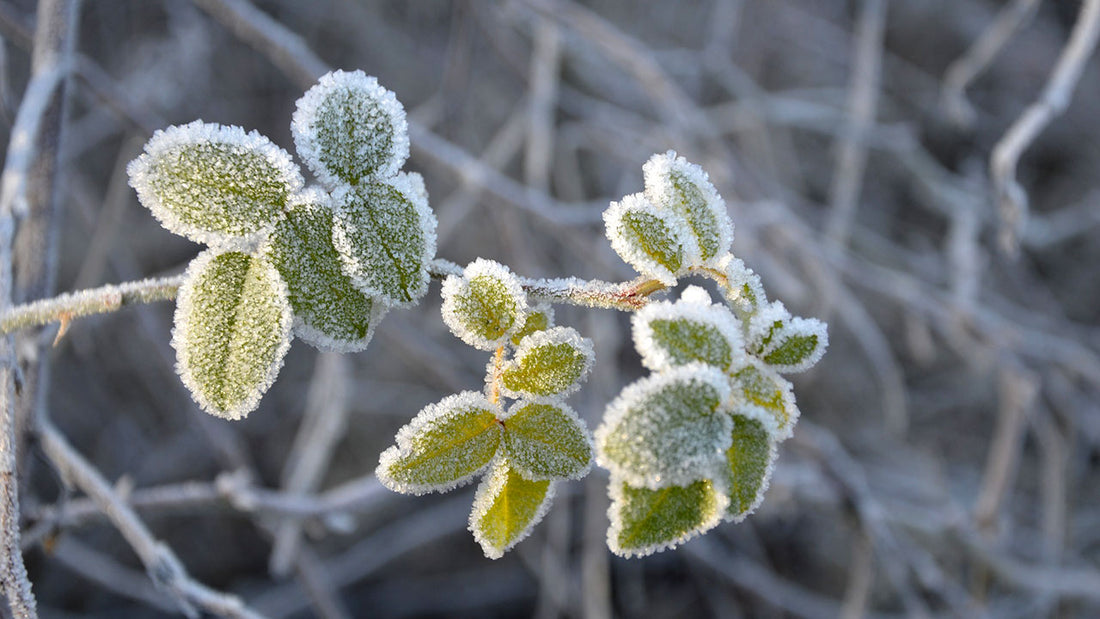During the darkest days of winter, while your orchard is dormant, there is little risk of frost damage to your trees. The biggest danger comes in the spring when the tree starts to break dormancy. The young leaf buds and shoot growth can be damaged by extreme cold, and a late frost or snowstorm can mean a harvest-less year for a tree in bloom.
Unfortunately, there is no cure for frost damage; a tree affected during its spring growth and bloom will have to wait until the next year to fruit. Prevention is key to protecting your tree from frost damage. The first step to preventing frost damage is to select a variety of tree that is cold hardy and has the correct chill hours for your climate. If your region typically experiences a late spring frost, select a variety that is additionally known to have a late bloom time. This will reduce or, if you’re lucky, eliminate the need to take further steps to protect your tree in the spring.
If your fruit trees are damaged by a late frost, you won’t necessarily lose your harvest for the year. Apples, pears and peaches can lose up to 90% of their flower buds without a decrease in harvest. Cherries will have a full harvest even when subjected to a 50% bud kill. The exact temperature that causes bud kill will vary by type of fruit, variety, bud maturity, and length of cold exposure. Most fruit trees in bloom can withstand temperatures as low as 28°F for 30 minutes, with only 10% bud kill (and thus no reduction in harvest). You can find a comprehensive illustrated chart for the lowest temperatures that fruit trees can typically tolerate from Utah State University Extension. If temperatures are expected to drop too low once your tree begins budding or blooming, or if sleet or snow is predicted, it’s time to take action. If your tree is small enough, you can wrap it in frost blanket bags for the duration of the cold snap. For larger trees, spraying with Frost Shield provides protection to young leaves and flowers without damaging them or preventing pollination from occurring.


21 comments
Good morning! I am in zone 8b here and worried about the next Spring frost. My Earligrande peach tree is approximately 5 years old and has never produced a crop. However, about three dozen buds have pink blooms already and the bees are going crazy. Last week, I pruned the bull shoots and dead branches. Did I prune too early? I have frost blankets leftover from when she was a maiden, but they may cover most of the top canopy. What are some other precautions I can take? Thanks in advance.
my peaches are about quarter to golf ball size. its suppose to get down to about 27 degrees tonight for a couple of ours. is this going to wipe out my peaches?
Jacquelyn, if the branches are beyond living, you could go ahead and remove them, once you have dry weather ahead. I would not cover the cut with anything. You can just allow the cut to heal on its own. But don’t cut it if you have rain in the forecast. If the branches cannot be saved, the tree will drop the fruit on its own and absorb the nutrients from the fruit and the leaves. The weather has been really crazy this spring and I feel your pain about your trees.
Should I remove frost-damaged branches on my Peach tree now or wait until after it bears the fruit?
With the recent ice storms we just had in the Sierra Madre’ mountains, my Peach tree suffered split bark on several branches and the spot where one major branch connects to the trunk, (it’s a deep V-type connection). The wounds did ooze, which was washed away by the next wave of storm. The tree has a lot of small fruit, ranging from the size of a dime to a bit larger than a silver dollar. These mountains behind Tehachapi, CA have these late frosts & ice storms most every year, so this particular peach tree has died & come back from the root several times since I planted the original Nectarine tree back in 1996. It brings Amazing fruit, and I really want to save this tree with organic methods.
Spraying the tree with a tea-like solution of cinnamon and cayenne pepper, and spreading the sludge over the root area has helped with a peach-leaf curl problem, and greatly reduced the aphids & ants. Would it help to use this solution or paste on the wounds and maybe patch them up with surgical tape or cheesecloth, …or acrylic/latex paint? Should I just go ahead & remove the damaged material right away? … or remove the fruit from those branches to reduce the strain on the tree & wait until dormancy to remove them? … or just leave the fruit there & let it come forth – if it will? I’ve resolved to build a cage for her so I can drape her with light fabric ahead of future spring storms and protect her fruit from the neighborhood deer. I’d surely appreciate your guidance. Thanks, J.R.Marie, I would focus more on the plants that are showing that they have broken dormancy. Whether or not the plant gets frost damage will depend on how low it goes and for how long. You might also cover the fig. Until they get a good established root system, they can be damaged by frost. I wouldn’t worry about the grape, it can should be able to recover just fine.